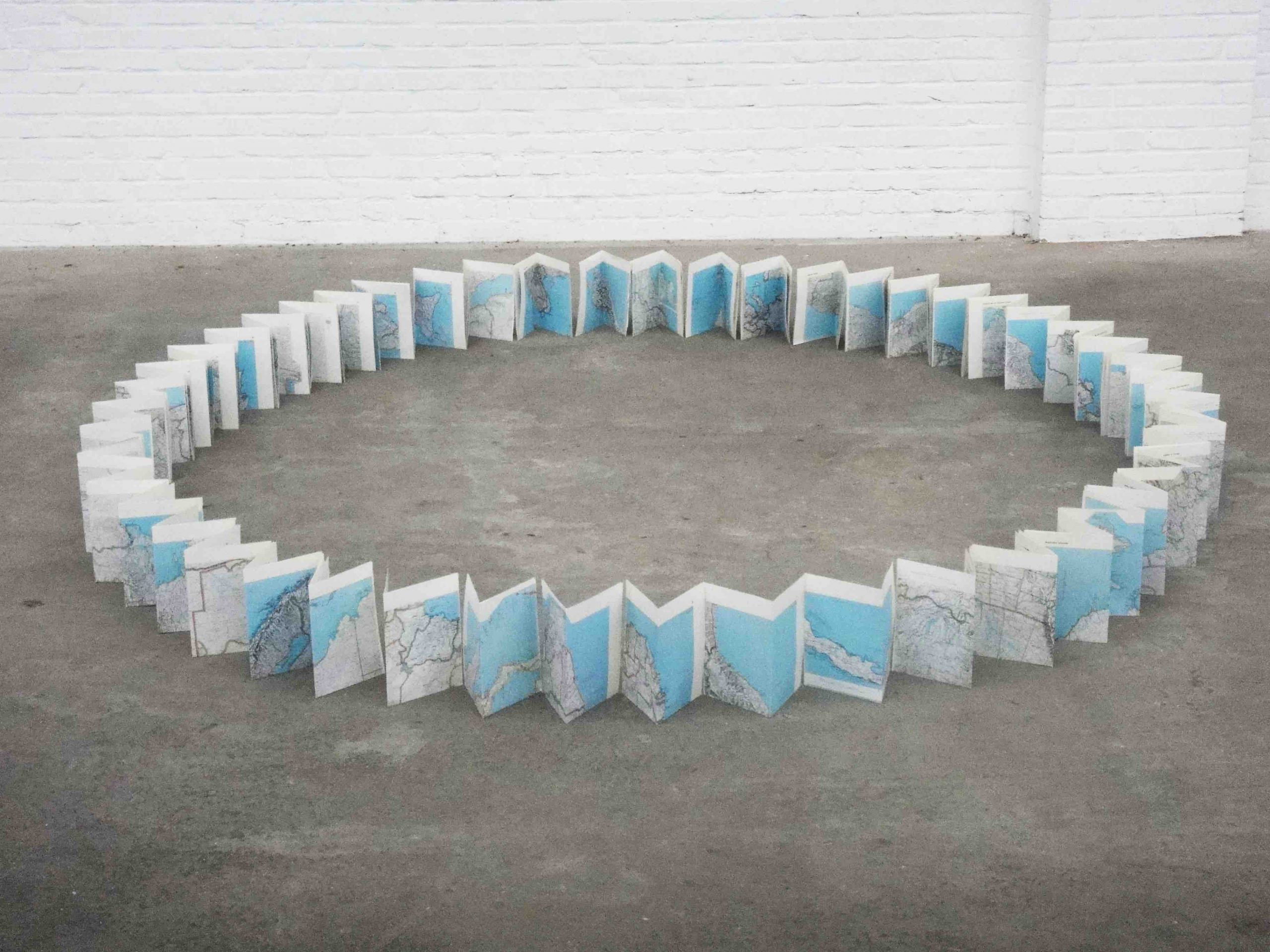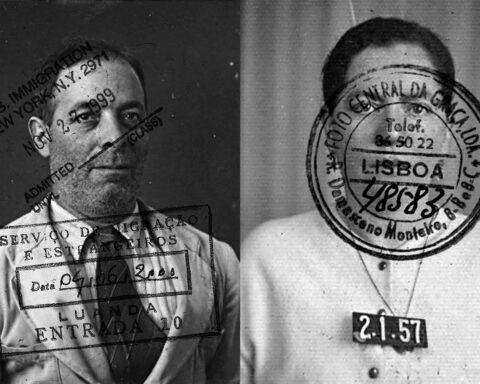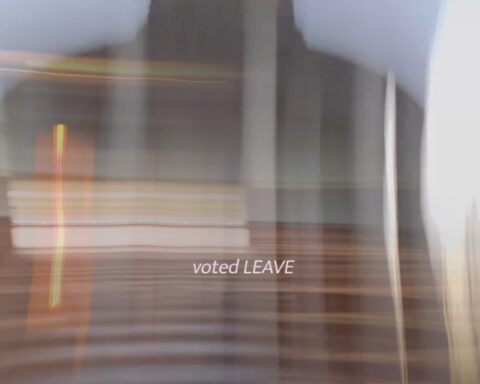Gabriel Rico (Lagos de Moreno, 1980) studies architecture at the Instituto de Estudios Superiores de Occidente (ITESO). His work is a constant study of production processes and both aesthetic and compositional possibilities of objects, with a particular interest in morphological conditions caused by erosion. His work has been presented in museums, galleries and independent spaces in Mexico, Colombia, England, Holland, Belgium, Spain and South Korea. For example, in the Art Museum of Sinaloa (MASIN) in Culiacan, Mexico; Public Library Virgilio Barco in Bogotá, Colombia; the CEART (Centro de Arte Tomas y Valiente) in Madrid, Spain; Triennial “Coup de Ville” in St. Nikklas, Belgium and the VIII International Biennial of Ceramics of Gyeonggi in Seoul, South Korea.
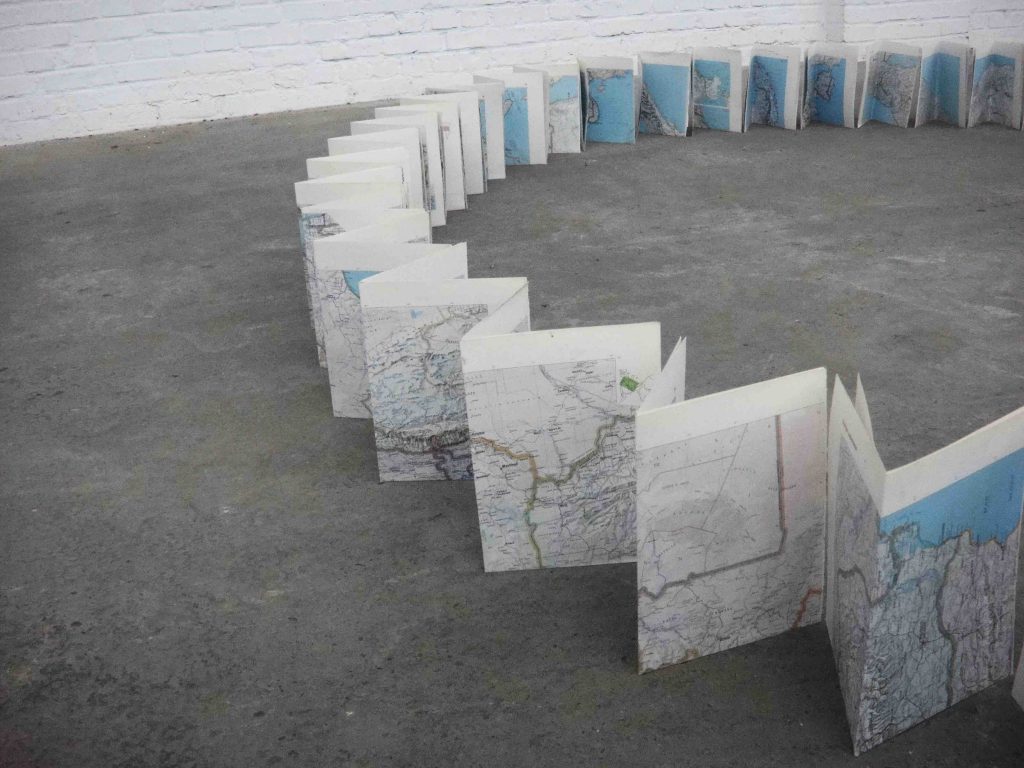
AtlAS. Paper – World Atlas intervened. 250 x 35 x 250 cm – 98 x 14 x 98 inches 2014
Francesca Pirillo: What is your cultural background and how does it affect your work?
Gabriel Rico: I grew up in the suburbs of a small city called Lagos de Moreno in Mexico, near to the hills and where there were abundant natural objects (stones, branches, etc.) so collection became a way to explore and understand the environment. At the present, this way to recognize the environment is a very strong part in my artistic practice. I studied architecture, and since then, space and the different sciences that study it (architecture, geometry, mathematics, etc.) have had a strong impact on my conscience about the possibility of assembling objects, collecting them into a composition, and placing them in a specific site, which in turn directly affects the space in which they are placed.
F.P.: How would you describe your artistic approach?
G.R.: I am fascinated with the idea of existing and the power that this entails, and I have tried to create works that have destinies of their own, using the gedankenexperiments like beginning. Having always been fascinated with the philosophical analogies and scientific disciplines, my work has been influenced by the sciences that study the form and the space. I consider myself an ontologist with a heuristic methodology, sometimes using technology tools and scientific models as metaphors for collective memory. I use deconstruction and recontextualization as methods to ensure the representation and development in areas such as knowledge materializations, the fragility of space, the exploration of the audio-visual terms, and the origin of information.
My work is to refer a reflection about the nature of the pieces from the order they possess, the materials used to make them, and the place where they are presented.
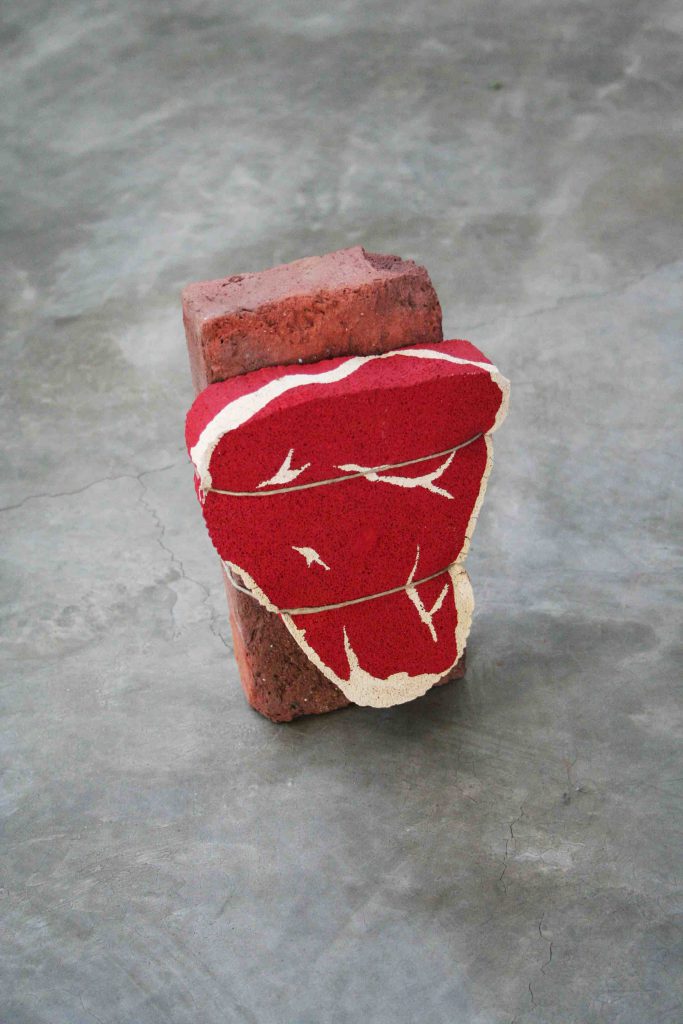
F.P.: How has your work developed over the years?
G.R.: I think the direct consequence that time has had on the conceptual and figurative development in my work is located directly on the awareness of the scale of the pieces that I make and the number of objects or items I use to produce them. Sometimes my pieces start with objects I find in a country like Belgium or Colombia and after 2, 3 or 4 years of collecting objects, I conclude using them in the production of a new piece.
F.P.: Could you tell us about Worm?
G.R.: This piece is a sculpture that results from abstracting the graphic design of the sound spectrum of an audio where blasts from a semiautomatic firearm are heard. The recording lasts 1.5 seconds and the sculpture is 7.7 meters long. This has to do with the direct but dissimilar relationship between sound and its physical interpretation, which is composed of defined patterns. The piece itself shows these characteristics as if it were a skeleton that provides evidence of the possibility of considering violence as social feed. I believe that violence is necessary and that in some ways it functions as nourishment to form us as people and as a society; this is why the sculpture is made out of plates and cups which physically emulate the sound of a violent act. I am interested in the physical representation of sound in space: a unique, and not always consist, scale is produced by the measurable size of sound, by its waves, its decibels or other possible scales that give it a dimension. Each act can be seen as a fingerprint, unique and unrepeatable.
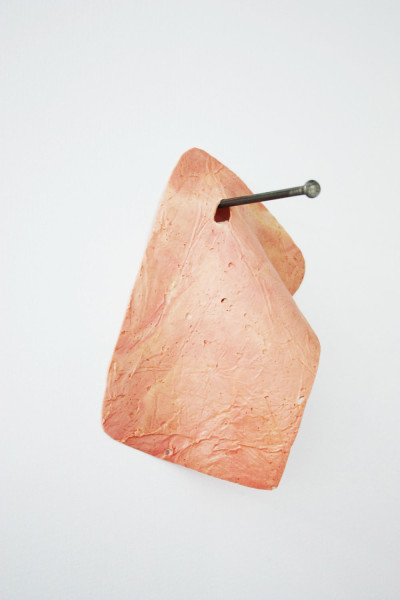
15 x 12 x 22 cm – 6 x 4,7 x 8,6 inches
F.P.: What role does irony plays in your work?
G.R.: I think the irony is a fundamental part of some of my pieces but I do not consider it as a principle for its creation. I consider the nature of human thought and its possibility to individually abstract ourselves from reality is the ironic act par excellence. It is at this point where some of my pieces are connected with this concept, because basically all my work relates to the human condition and the erosion of the objects we use in daily life. 6)Could you describe for us Crucifixión ? This piece refers to the basic nature and form of things and objects (ontology), specifically when Jesus lost his soul and became a piece of meat stuck by a piece of metal represented as a slice of ham and a nail. This piece also explores the transformation of Jesus in a concept of the pop culture, as happened with ham in the work of Richard Hamilton. 7)What do you hope people will take away from your art? I would like people who see my work to understand that the possibility to observe is a personal choice. If one attempts it, then one begins to understand the precariousness of objects as an aesthetic quality, which only time grants.
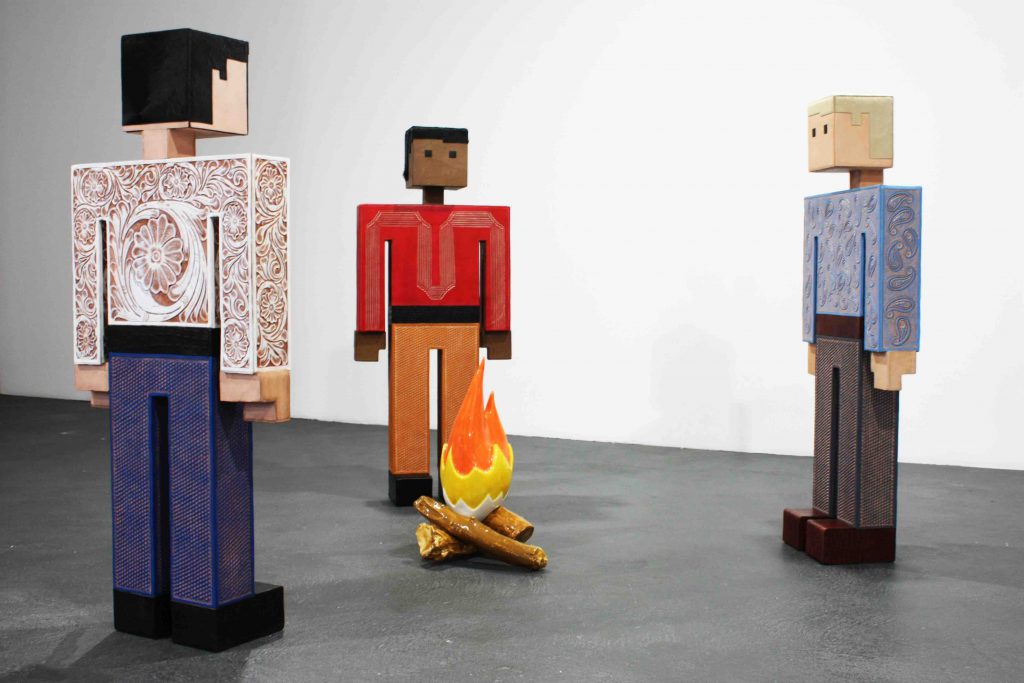
JAMeS, Clerk & MAxWell
Wood, carved on leather, natural hair, ceramic 230 x 100 x 230 cm – 90,55 x 39 x 90,55 inches 2013
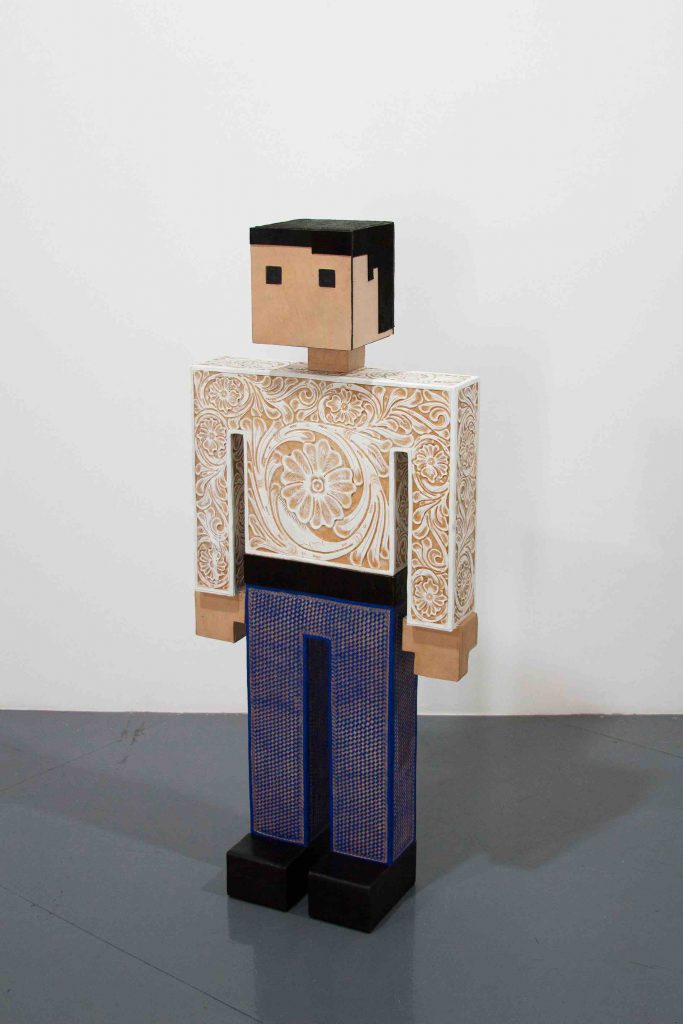
JAMeS, Clerk & MAxWell
Wood, carved on leather, natural hair, ceramic 230 x 100 x 230 cm – 90,55 x 39 x 90,55 inches 2013


